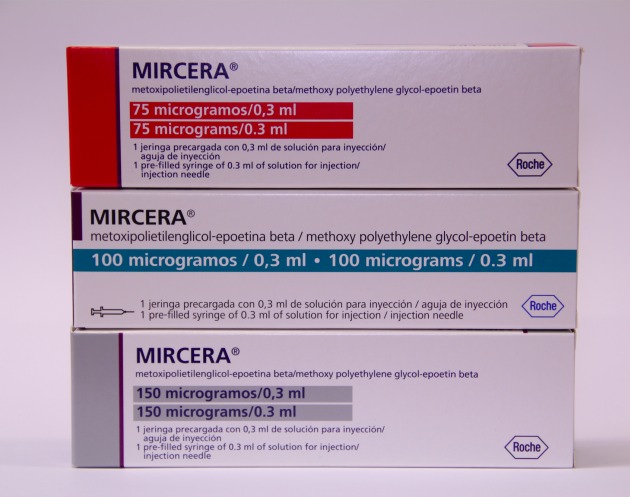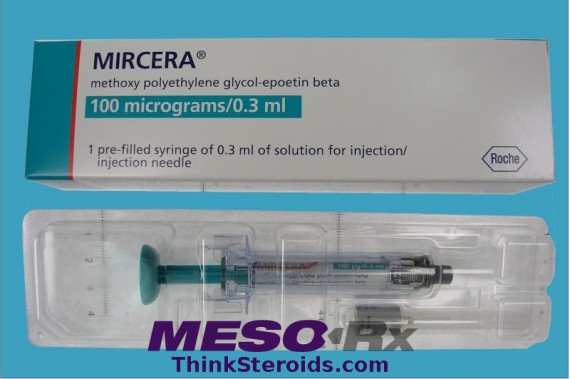
Cyclist Riccardo Ricco of the Saunier Duval-Scott team tested positive for the new performance enhancing drug Mircera (methoxy polyethylene glycol-epoetin beta) at the 2008 Tour de France. Ricco is a top cyclist on the Tour and the King of the Mountains and White Jersey leader.
Mircera is a third generation version of erythropoietin manufactured by pharmaceutical giant Hoffman-LaRoche that has been called “Super EPO.” The big news at the Tour is not that another cyclist was caught doping, it is that a cyclist was caught using a performance enhancing drug that was widely considered “undetectable.” The quick withdrawal of the entire Saunier Duval team from the Tour supports speculation that Mircera was the team’s secret weapon (“Riccardo Riccò tests positive; Saunier Duval team withdraws from Tour de France,” July 17).
Recent rumors in the sport had suggested that some riders were using an undetectable new oxygen-enhancing drug widely thought to be Roche’s Micera. The existence of a test for CERA was not announced, but Riccò’s positive for the substance suggests that it has not escaped the attention of anti-doping officials.
WADA spokesperson Frédéric Donzé took used the opportunity to congratulate WADA on a job well-done.
“WADA is very much aware of the development of new EPOs and biosimilar EPOs in an expanding market.”
“In the case of Mircera (CERA ) thanks to the cooperation of the manufacturer of this substance (Roche) and of WADA-accredited laboratories, WADA received the molecule well in advance and was able to develop ways to detect it,” he said. “This case shows the significant work that WADA conducts in anticipating doping trends, including by closely cooperating with pharmaceutical companies at very early stages of the development of molecules or substances for therapeutic purposes to develop detection methods for anti-doping purposes.”
Mircera is an artificial form of erythropoietin (EPO) stimulators similar to Amgen’s Epogen and Aranesp. But Mircera is thought to be superior to Epogen and Aranesp due to the use of pegylation technology that provides a sustained release of erythropoiesis stimulating proteins (ESPs). PEGylated erythropoietin (PEG-EPO) results when a molecule of polyethylene glycol is attached.
Mircera (PEG-EPO) belongs to a category of drugs called Continuous Erythropoeitin Receptor Activators or CERA because it continuously interacts with the EPO receptor producing longer lasting effects. Only 1-2 monthly injections of Mircera have similar results to three times weekly injections of Epogen. Detailed instructions on using Mircera can be found on the Internet.
Trust But Verify wonders if Ricco actually tested positive for Mircera or was simply caught with the product in his possession (during a police search of his room). TBV points to comments made by blood doping expert Professor Michael Audren to CyclingNews.com.
It’s a delayed-action EPO, which has a different molecular mass from EPO. It’s only been commercially available since the start of the year. We can tell when someone’s used it but we can’t declare them positive. In that respect it’s like Dynepo, another EPO-like product. We know that Micera was being used on the Giro, so I’m not surprised that it’s also turned up at the Tour. But I would be very surprised if they AFLD had declared Riccò positive for Micera, for the reasons I’ve just mentioned. Maybe they searched Riccò’s room and found the product itself… (emphasis added by TBV)
It would not surprise us if TBV and Professor Audren are correct; WADA is well-known for overstating their ability to effectively and reliably detect various performance enhancing drugs.


About the author
Millard writes about anabolic steroids and performance enhancing drugs and their use and impact in sport and society. He discusses the medical and non-medical uses of anabolic-androgenic steroids while advocating a harm reduction approach to steroid education.

Leave a Reply
You must be logged in to post a comment.